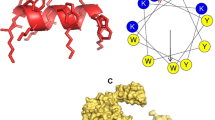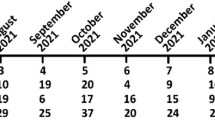Abstract
Pathogenic Vibrio alginolyticus, a cause of severe infection in shellfish, as well as in humans, has been found at high frequency around all coastal areas of Korea. The aim of this study was to determine the occurrence of V. alginolyticus, to identify the strains isolated from oysters in West Sea, and to investigate their antimicrobial resistance profiles. Biochemical analyses of the 90 initially recovered presumptive V. alginolyticus colonies indicated that 16 isolates were V. alginolyticus. PCR analysis to detect the presence of the gyrB gene confirmed that 15 (93.8 %) of the 16 isolates were V. alginolyticus. These 15 isolates had the following profiles of resistance against 16 antibiotics: all isolates were resistant to ampicillin and vancomycin, and 26.7 % of the isolates exhibited resistance to cephalothin. A large number of isolates showed intermediate resistance to erythromycin (100 %) and rifampin (73.3 %). Five (33.3 %) of the V. alginolyticus isolates demonstrated multiple resistance to at least three antimicrobials.


Similar content being viewed by others
References
Abd-Elghany SM, Sallam KI (2013) Occurrence and molecular identification of Vibrio parahaemolyticus in retail shellfish in Mansoura, Egypt. Food Control 33:399–405
Aoki T (1988) Drug-resistant plasmids from fish pathogens. Microbiol Sci 5:219–223
Balebona MC, Zorrilla I, Morinigo MA, Borrego JJ (1998) Survey of bacterial pathologies affecting farmed gilthead sea bream (Sparus aurata L.) in southwestern Spain from 1990 to 1996. Aquaculture 166:19–35
Cavallo RA, Stabili L (2002) Presence of vibrios in seawater and Mytilus galloprovincialis (lam.) from the Mar Piccolo of Taranto (Ionian Sea). Water Res 36:3719–3726
Cook DW, O’Leary P, Hunsucker JC, Sloan EM, Bowers JC, Blodgett RJ, DePaola A (2002) Vibrio vulnificus and Vibrio parahaemolyticus in US retail shell oysters: a national survey from June 1998 to July 1999. J Food Prot 65:79–87
Croci L, Serratore P, Cozzi L, Stacchini A, Milandri S, Suffredini E, Toti L (2001) Detection of Vibrionaceae in mussels and in their seawater growing area. Lett Appl Microbiol 32:57–61
Ferrini AM, Mannoni V, Suffredini E, Cozzi L, Croci L (2008) Evaluation of antibacterial resistance in Vibrio strains isolated from imported seafood and Italian aquaculture settings. Food Anal Methods 1:164–170
Fujino T, Okuno Y, Nakada D, Aoyama A, Fukai K, Mukai T, Ueho T (1953) On the bacteriological examination of shirasu food poisoning. Med J Osaka Univ 4:299–304
Gomez-León J, Villamil L, Lemos ML, Novoa B, Figueras A (2005) Isolation of Vibrio alginolyticus and Vibrio splendidus from aquacultured carpet shell clam (Ruditapes decussatus) larvae associated with mass mortalities. Appl Environ Microbiol 71:98–104
Han AR, Yoon YJ, Kim JW (2012) Antibiotic resistance and plasmid profile of Vibrio parahaemolyticus strains isolated from Kyunggi-Incheon coastal area. Korean J Microbiol 48:22–28
Han F, Walker RD, Janes ME, Prinyawiwatkul W, Ge B (2007) Antimicrobial susceptibilities of Vibrio parahaemolyticus and Vibrio vulnificus isolated from Louisiana Gulf and retail raw oysters. Appl Environ Microbiol 73:7096–7098
Hara-Kudo Y, Sugiyama K, Nishibuchi M, Chowdhury A, Yatsuyanagi J, Ohtomo Y (2003) Prevalence of pandemic thermostable direct hemolysin-producing Vibrio parahaemolyticus O3:K6 in seafood and the coastal environment in Japan. Appl Environ Microbiol 69:3883–3891
Holt JG, Krieg NR, Sneath PHA, Staley JT, Williams ST (1994) Bergey’s manual of determinative bacteriology, 9th edn. Williams & Wilkins, PA, pp. 260–274
Hornstrup MK, Gahrn-Hansen B (1993) Extraintestinal infections caused by Vibrio alginolyticus in a Danish county, 1987–1992. Scand J Infect Dis 25:735–740
Jun JW, Kim JH, Choresca CH, Shin SP, Han JE, Han SY, Chai JY, Park SC (2012) Isolation, molecular characterization, and antibiotic susceptibility of Vibrio parahaemolyticus in Korean seafood. Foodborne Pathog Dis 9:224–231
Kesarcodi-Watson A, Kaspar H, Lategan JM, Gibson L (2008) Probiotics in aquaculture: the need, principles and mechanisms of action and screening processes. Aquaculture 274:1–14
Kelly MT (1982) Effect of temperature and salinity on Vibrio (Beneckea) vulnificus occurrence in a Gulf Coast environment. Am Soc Microbiol 44:820–824
Krumperman PH (1983) Multiple antibiotic resistance indexing of Escherichia coli to identify high-risk sources of fecal contamination of foods. Appl Environ Microbiol 46:165–170
Kumar HS, Parvathi A, Karunasagar I, Karunasagar I (2006) A gyrB-based PCR for the detection of Vibrio vulnificus and its application for direct detection of this pathogen in oyster enrichment broths. Int J Food Microbiol 111:216–220
Lee HK, Yoon YH, Lee SS, Ha KH (1998) Biochemical characteristics of Vibrios isolated from cultured shellfish, Ruditapes philippinarum, and some species of wild shellfish. J Korean Soc Microbiol 33:567–574
Lee JK, Jung DW, Eom SY (2008) Occurrence of Vibrio parahaemolyticus in oysters from Korean retail outlets. Food Control 19:990–994
Levy SB (2001) Antibiotic resistance: consequences of inaction. Clin Infect Dis 33:124–129
Liu JW, Lee IK, Tang HJ, Ko WC, Lee HC, Liu YC, Hsueh PR, Chuang YC (2006) Prognostic factors and antibiotics in Vibrio vulnificus septicemia. Arch Intern Med 166:2117–2123
Luo P, Hu C (2008) Vibrio alginolyticus gyrB sequence analysis and gyrB-targeted PCR identification in environmental isolates. Dis Aquat Org 82:209–216
Manjusha S, Sarita GB, Elyas KK, Chandrasekaran M (2005) Multiple antibiotic resistances of Vibrio isolated from coastal and brackish water areas. Am J Biochem Biotechnol 1:201–206
Martinez-Urtaza J, Huapaya B, Gavilan RG, Blanc-Abad V, Ansede-Bermejo J, Cadarso-Suarez C (2008) Emergence of Asiatic vibrio disease in South America in phase with El Nino. Epidemiology 19:829–837
Morris JG, Tenny J (1985) Antibiotic therapy for Vibrio vulnificus infection. J Am Med Assoc 253:1121–1122
NCCLS (2003) Performance standards for antimicrobial disc susceptibility tests: approved standard, National Committee for Clinical Laboratory Standard of Antimicrobial Susceptibility, document M2-AS. Pennsylvania, USA
O’Hara CM, Sowers EG, Bopp CA, Duda SB, Strockbine NA (2003) Accuracy of six commercially available systems for identification of members of the family Vibrionaceae. J Clin Microbiol 41:5654–5659
Oh EG, Son KT, Yu H, Lee TS, Lee HJ, Shin SB, Kwon JY, Park KBW, Kim JH (2011) Antimicrobial resistance of Vibrio parahaemolyticus and Vibrio alginolyticus strains isolated from farmed fish in Korea from 2005 through 2007. J Food Prot 74:380–386
Ottaviani D, Bacchiocchi I, Masini L, Leoni F, Carraturo A, Giammarioli M, Giovanni S (2001) Antimicrobial susceptibility of potentially pathogenic halophilic vibrios isolated from seafood. Int J Antimicrob Agents 18:135–140
Selvin J, Lipton AP (2003) Vibrio alginolyticus associated with white spot disease of Penaeus monodon. Dis Aquat Org 57:147–150
Son KT, Oh EG, Lee TS, Lee HJ, Kim PH, Kim JH (2005) Antimicrobial susceptibility of Vibrio parahaemolyticus and Vibrio alginolyticus from fish farms on the southern coast of Korea. J Kor Fish Soc 38:365–371
Son R, Rusul G, Sahilah AM, Zainuri A, Raha AR, Salmah I (1997) Antibiotic resistance and plasmid profile of Aeromonas hydrophila isolates from cultured fish, tilapia (Tilapia mossambica). Lett Appl Microbiol 24:479–482
Stabili L, Gravili C, Boero F, Tredici SM, Alifano P (2010) Susceptibility to antibiotics of Vibrio sp AO1 growing in pure culture or in association with its hydroid host Aglaophenia octodonta (Cnidaria, hydrozoa). Microb Ecol 59:555–562
Tacão M, Moura A, Henriques I, Savedra MJ, Correia A (2005) Evaluation of 16S rDNA- and gyrB-DGGE for typing members of the genus Aeromonas. FEMS Microbiol Lett 246:11–18
Thaithongnum S, Ratanama P, Weeradechapol K, Sukhoom A, Vuddhakul V (2006) Detection of V. harveyi in shrimp postlarvae and hatchery tank water by the most probable number technique with PCR. Aquaculture 261:1–9
Thompson FL, Iida T, Swings J (2004) Biodiversity of vibrios. Microbiol Mol Biol Rev 68:3403–3431
Vezzulli L, Colwell RR, Pruzzo C (2013) Ocean warming and spread of pathogenic vibrios in the aquatic environment. Microb Ecol 65:817–825
Yamamoto A, Iwahori J, Vuddhakul V, Charernjiratragul W, Vose D, Osaka K, Shigematsu M, Toyofuku H (2008) Quantitative modeling for risk assessment of Vibrio parahaemolyticus in bloody clams in southern Thailand. Int J Food Microbiol 124:70–78
Zanetti S, Deriu A, Volterra L, Falchi MP, Molicotti P, Fadda G, Sechi L (2000) Virulence factors in Vibrio alginolyticus strains isolated from aquatic environments. Ann Ig 12:487–491
Zanetti S, Spanu T, Deriu A, Romano L, Sechi LA, Fadda G (2001) In vitro susceptibility of Vibrio spp. isolated from the environment. Int J Antimicrob Agents 17:407–409
Zhao F, Zhou D, Cao H, Ma L, Jiang Y (2011) Distribution, serological and molecular characterization of Vibrio parahaemolyticus from shellfish in the eastern coast of China. Food Control 22:1095–1100
Acknowledgments
This work was supported by an Inha University Research Grant.
Author information
Authors and Affiliations
Corresponding author
Additional information
Responsible editor: Philippe Garrigues
Rights and permissions
About this article
Cite this article
Kang, CH., Shin, Y., Jang, S. et al. Antimicrobial susceptibility of Vibrio alginolyticus isolated from oyster in Korea. Environ Sci Pollut Res 23, 21106–21112 (2016). https://doi.org/10.1007/s11356-016-7426-2
Received:
Accepted:
Published:
Issue Date:
DOI: https://doi.org/10.1007/s11356-016-7426-2




